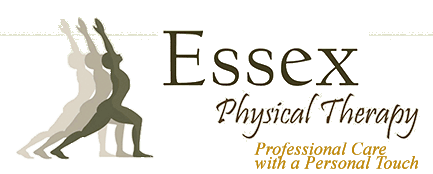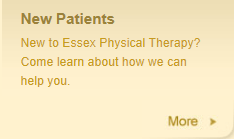
Rehabilitation
What is Postural Restoration?
Postural Restoration is a one of many treatment techniques used here at Essex Physical Therapy with the majority of our patients. It is a technique designed to help the body restore neutral posture by eliminating unwanted muscle tension. Postural restoration may be used in conjunction with traditional Physical Therapy treatment methods during the course of your therapy.
Why is it important?
When unwanted muscle tension develops in the body, it creates abnormal forces on the joints. This leaves us more susceptible to injury, or results in pain, either at the site of the muscle tension, or somewhere else in the body.
How does it work?
Postural Restoration is based on the concept of opposition. The brain sends signals to muscles with opposite actions on either side of the joint. When one muscle is contracting, the other muscle shuts down. Therefore, we can “shut off” those muscles with unwanted tension by firing the muscle opposite to them on the joint.
What does the treatment consist of?
There are two main categories of treatment that are used to achieve postural restoration. The first, and most important for success, is the home exercise program. It is necessary for these exercises to be done frequently in the beginning (2-4 times per day) in order for muscle re-education to take place. As the muscle tension is eliminated, the frequency of exercise can diminish.

The second intervention is manual therapy. Your therapist will actually guide your body into new positions as you engage the muscles necessary to hold your body in this position. Most of these techniques work the rib cage/torso as another area of frequent unwanted tension in the body is the diaphragm, your breathing muscle. Manual Therapy will thus incorporate breathing exercises.
What are the goals of Postural Restoration?
- Achieve full flexibility and range of motion after treatment in the clinic.
- Return to the clinic with full flexibility and range of motion.
- Relief of symptoms/pain.
- Increase strength of postural stabilization muscles.
- Return to all functional activities without symptoms/pain.
Postural discrepancies will lead to muscle and joint stress and ultimately, to pain. These pain syndromes can involve the entire body (neck and shoulder pain, lower back pain, hip and lower extremity pain, etc.). Faulty posture is often the origin of overuse injury, and it can delay healing when there is a traumatic onset of pain. Postural restoration can help alleviate common pain syndromes and restore function in individuals of all ages.
Contact us to request more information about our postural restoration services.
SHARE THIS PAGE:


